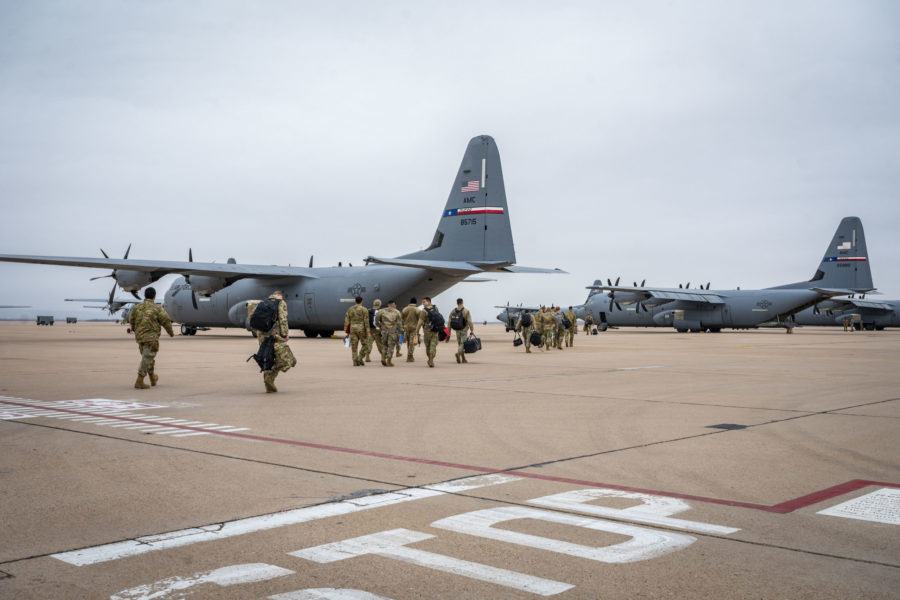AURORA, Colo.—Looking to build stability and improve readiness, Air Force leaders said at the AFA Warfare Symposium they are planning a move in 2024 to what they call a more cohesive approach to deployments for Airmen.
That deadline to implement the service’s new force generation model—Air Force Force Generation, or AFFORGEN—is a self-imposed one, reflecting an urgency to shift focus to the Pacific and prepare for a more sophisticated fight, a panel of top generals said March 8.
“We’re changing fast enough now,” Lt. Gen. James C. “Jim” Slife, deputy chief of staff for operations said. “The reason we’re changing our force generation, force presentation models in the Air Force is because the strategic environment has changed.”
That changed environment means Airmen need to arrive at their deployed location prepared to work as a team without the luxury of time to work out the kinks—and AFFORGEN will emphasize that by grouping units together in new ways.
Instead of just bringing over squadrons, the Air Force will create XABs, or expeditionary air bases. That will replace the current model of air expeditionary wings. The goal is to bring more operations from a home base into a deployed location, including, for example, security forces personnel that previously may not have gone along with pilots and maintainers.
“It really goes back to what our National Defense Strategy says—we have to be ready for the high-end fight,” said Maj. Gen. Clark J. Quinn, deputy commander of Air Forces Central. “The AFFORGEN model is going to move away from the decades-long crowdsourcing—asking hundreds of Airmen to come from dozens of locations to arrive in their expeditionary wing, and then execute ops immediately as a high-performing team.”
Those teams of Airmen will cycle through four six-month phases in AFFORGEN—“available to commit,” “reset,” “prepare,” and “ready.” After twenty years of heavy demand for airpower during America’s fights in the Middle East that strained units and aircraft, AFFORGEN is supposed to provide predictability for Airmen and aircraft—and subsequently improve readiness.
“We’ve been able to get away with that in an operating environment where frankly, we have not been heavily pressured by our adversaries,” Slife said. “We’ve been able to get away with taking three Airmen from this base, five Airmen from this base and two Airmen from that base, deploy them and expecting them to come together on day one, be a team. But we don’t actually think that that’s the way the future operating environment is going to permit us to operate. We’re going to have to build and generate teams of Airmen at home station that train together, deploy together and then come home and reset together and go through that cycle.”
In addition to providing cohesion within the Air Force itself, leaders also expect AFFORGEN to make it easier to articulate what they actually have to combatant commanders and the rest of the joint force—and sometimes make sure they know requesting aircraft constantly will have long-term ramifications.
“It allows us to have what I would call a boundary on it to say ‘No.‘” Lt. Gen. Michael A. Loh, director of the Air National Guard, explained to Air & Space Forces Magazine. “You can’t just set up another location and more force elements—whether it be fighters, tankers, airlift—because we don’t have it.”
Loh explained that sometimes saying “No” to a commander’s request will ultimately benefit the rest of the U.S. military—if forces that are supposed to be in the training bin are deploying, then the Air Force may not be able to provide those forces in six months. Equipment may be overused, families will be strained, and retention will suffer, he said.
“When you gotta be all in, there’s a time to be all in, but for normal global force management, the natural tension between the combatant commanders and the service, this is how we’re presenting forces now,” Loh added. “That will build us a stronger Air Force over time.”
